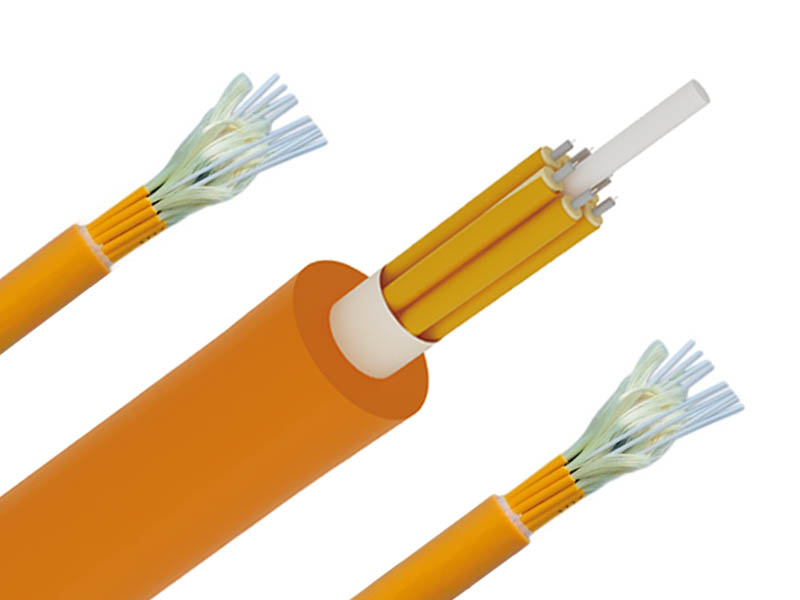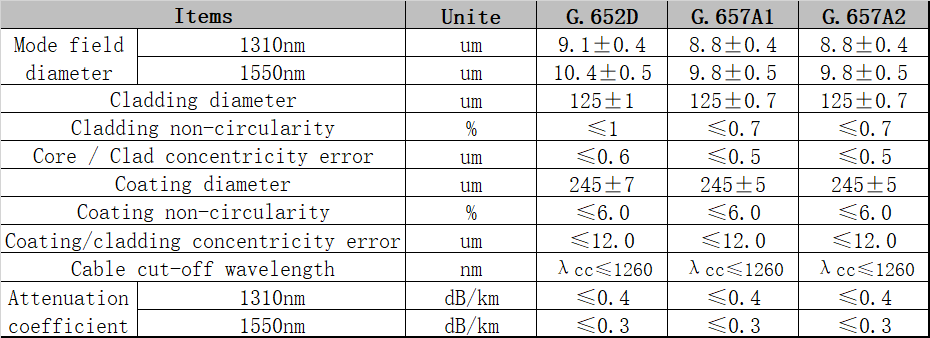
Branchable optical cables are mainly divided into two types. The first is parallel branch optical cables, which are ribbon-shaped optical cables composed of multiple sub-optical cables. There are discontinuous cuts between the sub-optical cables for optical cable branching. The second is the integrated branch optical cable, which consists of multiple optical cables integrated together to form a circular optical cable. Intermittent slits are opened in the outer jacket layer for optical cable branching. The structural size of the optical cable is related to the number of sub-optical cables, the requirements for the sub-optical cables, and the form of the branch optical cable.
Standards:YD/T 1258.2-2015
Temperature Range:Storage and operation::-40C ~ +70C;Erection:-15C ~ +60C
Laying method: branch wiring indoors and in buildings, multi-core optical fiber jumpers
Bend radius:Static 10 times the cable diameter,Dynamic 20 times optical cable diameter
Application:indoor wiring, single and double-core jumpers and pigtails, local area networks, connecting lines between equipment and instruments, trunk building passages, suspended ceilings, pallets and conduits between buildings
Fiber Type:G652D;G657A1;G657A2;50/125;62.5/125;OM3-150;OM3-300;OM4 As Options
Single-mode(SM)

Multi-mode(MM)

Compared with ordinary optical cables, the main production process of branchable optical cables has different characteristics.
1、The production of parallel branch optical cables starts with the processing of loose-buffered or tight-buffered optical fibers, and then non-metal or metal reinforcement. This can be a separate process, or the non-metal reinforcement and metal reinforcement can be placed on the sheath to form together. Finally, the optical cable The production process is relatively simple and not very complicated, but the equipment requirements are different.
2、The production process of integrated branch optical cable is the same as the previous process. First is the production of loose or tight tube optical fiber, then non-metallic and metal reinforcement, then the sub-optical cable sheath, after the sub-optical cable sheath, then the integration of the optical cable jacket.
1、Has the transmission characteristics of ordinary optical cables;
2、There are independent reinforcing members in the sub-cable, which have high strength, good flexibility and easy branching.
3、It is easy to install, deploy, branch, and connect; it is convenient to construct and does not require special construction equipment. Branching is convenient. When branches are needed during the laying of the optical cable, you only need to tear off the intermittent branch cuts on the outer sheath to divide the optical cable into the required number of pieces. There is no need to cut off the entire optical cable, which reduces the workload, reduces labor intensity, and improves efficiency. Work efficiency, reduce overall damage to the optical cable, avoid increased transmission loss and possible failure points due to optical fiber connectors, improve the quality of optical cable laying and engineering construction, ensure the accuracy and stability of optical cable information transmission, and can be widely used in optical communications field.
4、Meet the different laying environment requirements of users; different laying environments put forward various special requirements for optical cables, such as anti-termite performance, anti-rodent performance, flame retardant performance, etc., especially the demand for low-smoke, halogen-free and flame-retardant optical cables will become more and more important. Come bigger.
5、Use non-metal reinforcement components to effectively eliminate electromagnetic interference. For thunderstorm-prone areas or areas with high electric fields, branchable optical cables using non-metal reinforcement components can avoid lightning strikes and resist electromagnetic interference.
Standard length:2000m, other lengths are also available
Note: The structure’s size and specifications can be desianed according to customer requirements